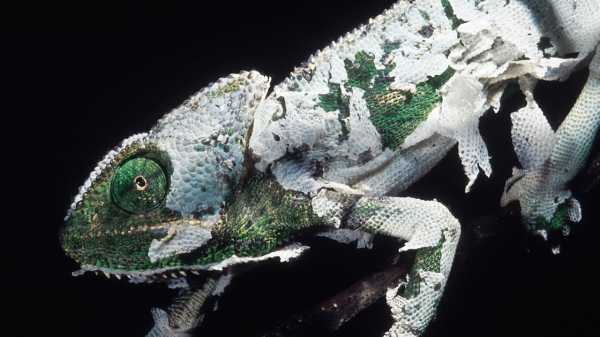
When I was thirteen years old, the skin on my chest was overtaken by a
mysterious outbreak of inflamed red dots. I attended an all-girls
boarding school in the Dehradun Valley, in India, where our bodies were
carefully watched over—our height, weight, molars, incisors, fevers, and
vaccinations each measured every term. Spots on the face were deemed
normal, maybe even healthy, vanity being one of the undesired traits
that the institution promised to eradicate. A smattering of inflamed
spots across your chin or cheekbone might even earn you sympathetic
offers from your peers. (“Do you want me to buy you a new loofah the
next time I go out?”) But, as I discovered that year, the neck marked an
invisible geographical border, and the appearance of acne below it
turned magnanimity into suspicion among friends and authority figures
alike: “Is that a rash?” “Are your sheets clean?” “Are you bathing
every day?” The wide square neckline of our school uniforms made my
breakout impossible to conceal. Despite walking around with my forearms
carefully folded across my rib cage, I quickly acquired a reputation as
the girl with the chest pimples.
After begging the school nurses to let me see a dermatologist, I was
sent for an appointment with Dr. Judge, whose clinic signage pronounced
him a specialist in “Skin Diseases and Leprosy.” He was a pale, thin
man, with uncommonly gray eyes. He didn’t speak a single word to me, or
ask any questions about when or how the breakout had begun. But he peered
sympathetically at the damage, scribbled some things on a pad, and
proffered a small, unimpressive-looking tube of ointment labelled “0.1% tretinoin.”
Dr. Judge’s prescription said to apply a thin layer of the cream once a
week, but in my desperation to be cured I instead slathered my chest
generously several times a day. By Day Three, the pimples seemed to have
dried up. By Day Seven, the first flakes of dry skin were floating off
my chest and settling on my sweater. I took this as evidence that the
cream was finally working, and rubbed it on with even more dedication,
carrying the tube around like a talisman. By Day Fifteen, triumph turned
to horror: the cream had certainly cleared out the zits, but it had also
obliterated the entire layer of skin that they’d occupied. In its place
now were a multitude of angry, pink dry patches that peeled off in the
shower in grotesque sheets. With the casual cruelty that comes so easily
to teen-agers, a girl in my dorm took a look at my chest and offered
that, if she were me, she’d be contemplating suicide by now. I threw out
the tube of cream and endured the chafing of a woollen scarf until the
peeling finally stopped. During the winter holidays, my mother, a firm
believer in impeccable self-presentation, and never one to mince words,
took one look at me and asked, “What have you done to yourself?”
Today, hundred-and-five-dollar retinol serums can be purchased at
Sephora in apothecary-inspired bottles, enhanced with added azulene oil
and blue tansy. But the original, all-chemical, prescription-only
retinoid skin cream is not a glamorous product. Nearly indistinguishable
from hemorrhoid cream, the blue-and-white, plastic-capped metal tube
doesn’t lend itself to performative #selfcare on Instagram. Its design
is seemingly immune to the passage of time, having remained true to the
same aesthetic since 1971, when it first got F.D.A. approval. My mother
credits her teen-age commitment to the cream for the singularly lineless
forehead and wrinkle-free nasolabial folds she now sports in her
fifties.
Within the field of dermatology, retinoid and its family of
Vitamin-A-derivative compounds—retinoid’s less potent offspring,
retinol; its purest form, tretinoin, or retinoic acid, of which Retin-A
is a common brand name—are spoken of with mythic reverence. Retin-A,
which works by purging old skin cells and forcing new ones to form at an
astonishing rate, is the insufferable overachiever of skin treatments,
known not only to blast away acne but to boost collagen production,
dissolve unwanted pigmentation, and, as if that weren’t enough, treat
skin lesions before they turn cancerous. Whether you’re hoping to get
rid of wrinkles or acne or malignant cells, though, a retinoid-improved
visage cannot be attained without enduring the carnage of red, inflamed,
and flaking dry skin along the way. And whether you adhere to using the
cream once a week, or go overboard, as I did, peel you will—perhaps not
enough to elicit suggestions of suicide but enough to make onlookers do
a double take, as if to silently confirm that, yes, that is indeed your
face, and it seems to be doing something usually seen only in National
Geographic specials about snakes and crustaceans.
Since Internet access was strictly forbidden at my Indian boarding
school, it wasn’t until my second major breakout, at the age of
twenty-three, when I was living in New York, that I found the reams of
message boards, subreddits, blog posts, and magazine articles devoted to
what are fittingly called the “retinoid uglies.” It was my face, this
time, that erupted in cystic pustules that ached and throbbed angrily if
I smiled too widely. I’d wake up with pinpricks of blood littering the
spot where I’d been sleeping. When I visited home, in October of 2015,
my mother took one look at me and asked, “What have you done to
yourself?”
I saw an Upper West Side dermatologist—tall, blond, with
intimidatingly great skin—who prescribed me another round of Retin-A.
This time, previous experience, and the advice of strangers on the
Internet, had prepared me for the flake-pocalypse. I stuck to the
prescribed treatment, a thumb-size dab once a week. A couple of months
into the regimen, the “purge” began. “Think of it as your skin taking
out the trash from inside the house,” my dermatologist explained. She
wrote me prescriptions for moisturizers, separate ones for morning and
night. I began lying on my left side in bed when the right side of my
face became too inflamed to position flat on the pillow.
Having adult acne is far from the worst way your body can betray you. It
was a blow to my vanity, certainly, and a minor indignity—even as a
tax-paying, apartment-renting, health-insurance-having citizen of the
world—to have to battle once again a condition I thought I’d left behind
along with braces and weeknight curfews. But there is a unique cruelty
in Retin-A’s way of making the problem worse before it gets better. The
before-and-after photos on Reddit didn’t prepare me for what I underwent in between—the farce of maintaining eye contact
during conversations, even as I could see the person I was talking to
glance involuntarily toward the raw patches along my jawline. Unlike the
wounds from a face-lift or a surgical procedure, the recovery caused by
Retin-A does not take place underneath bandages. The inevitable shedding
of skin violates one of the tenets of being an adult—and, especially, a
woman—in polite society: it is a public display of the concerted, and
occasionally painful, effort that goes into maintaining an appearance of
outward normalcy.
Like love and bankruptcy, clear skin, when it finally came, did so
gradually, then all at once. It’s been two years since I uncapped a new
tube of Retin-A 0.1% and more than six months since a zit last invaded
my face. My forehead now emits a truck-headlight-like glare in iPhone
photos owing to its somewhat artificial, Barbie-esque smoothness.
Occasionally, I still feel the throbs of a nascent pimple that threatens
to emerge from deep underneath my skin, but it never actually does. Just
in case, I keep a gnarled, half-squeezed tube of Retin-A on my dresser,
dusty from disuse. I didn’t get to post my own before-and-after shots
to Reddit—my phone fell into a puddle and all the photos from my
retinoid years were wiped out. But, last month, my mother peered into
the grainy screen of our weekly WhatsApp video call. “Skin looks good,
Iva,” she said.
Sourse: newyorker.com






